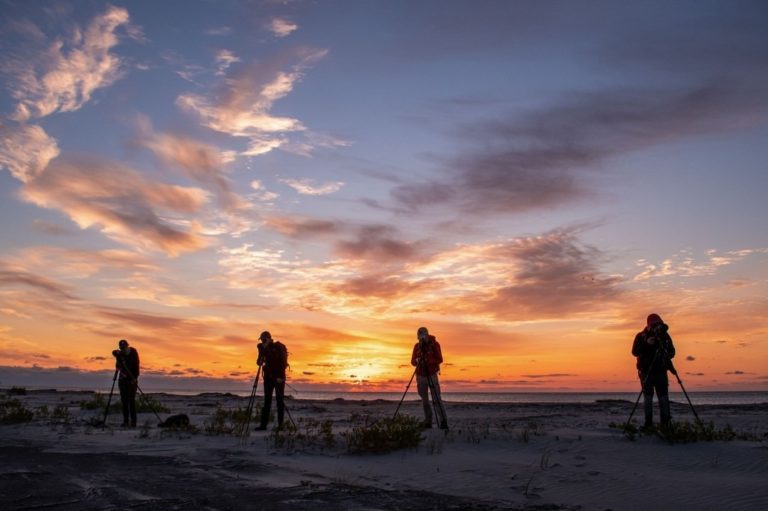The 100-mile span along the Georgia coast provides habitat and refuge for a range of resident and migratory wildlife, including hundreds of thousands of shorebirds and waterfowl each year. In fact, The Western Shorebird Reserve Network (WHSRN) has designated the Georgia barrier islands as a “Landscape of Hemispheric Importance” for shorebirds, making it a worthy destination for any bird-watcher’s bucket list. Visiting popular birding sites typically involves visits to nature centers, wildlife refuges, beaches, and more – opening the door to a world of outdoor recreation and discovery for all ages and abilities!
Landscape Of Hemispheric Importance
The WHSRN designation is based on coastal Georgia’s “variety of important habitats for shorebirds, including island beaches and dunes, offshore sand bars and extensive sand and mud flats exposed at low tides. One of the more remarkable attributes of the landscape is the number of natural inlets with no engineered channels. All of the inland sides of the barrier islands include extensive salt marsh, which provides critical foraging habitat for shorebirds throughout the year.”
Top Birding Spots In The Golden Isles
Colonial Coast Birding Trail
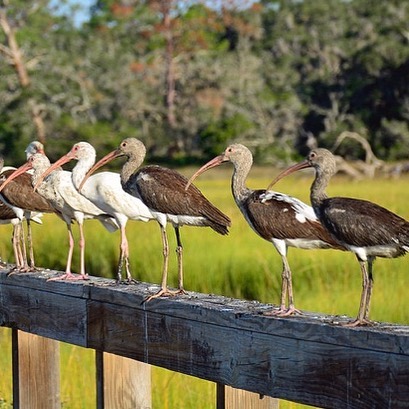
The Colonial Coast Birding Trail features 18 sites along the Georgia coast, including five in the Golden Isles. Four stops along the trail have specifically been designated Important Birding Areas by the Georgia Audubon Society, with more than 300 species of birds calling them home (Harris Neck National Wildlife Refuge, Jekyll Island, Cumberland Island, and the Okefenokee National Wildlife Refuge). The trail spans from Savannah in the north to St. Mary’s on the south end. Many locations double as notable historic sites as well. While these may be designated highlights, they’re by no means the only spots to watch for our magnificent feathered friends!
Saint Simons Island
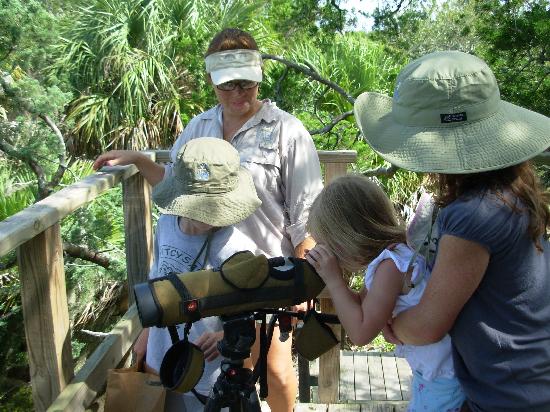
Thanks to its expansive marshlands and waterways, sandbars, and access to the Atlantic Ocean, St. Simons Island (off the coast of Brunswick), is ideal for birding all year long. The best spots on the island are both sites found on the Colonial Coast Birding Trail – East Beach, and a specific segment of the beach known as Gould’s Inlet.
Gould’s Inlet is situated on the southeast corner of St. Simons Island along East Beach. At high tide, you have a great chance of catching sight of shorebirds and gulls, especially in the early afternoon.
Summer months bring painted buntings, gulls, black skimmers, Wilson’s plover, and least tern. In the winter, look for shorebirds and waterfowl, including piping plover, loons, scoters, scaup, and northern gannets. During the spring and fall migration, this is a great spot for warblers, red knot, and whimbrel. All year ’round, East Beach is an ideal location for spotting songbirds, wading birds, and birds of prey, including the American oystercatcher, and bald eagle.
Jekyll island
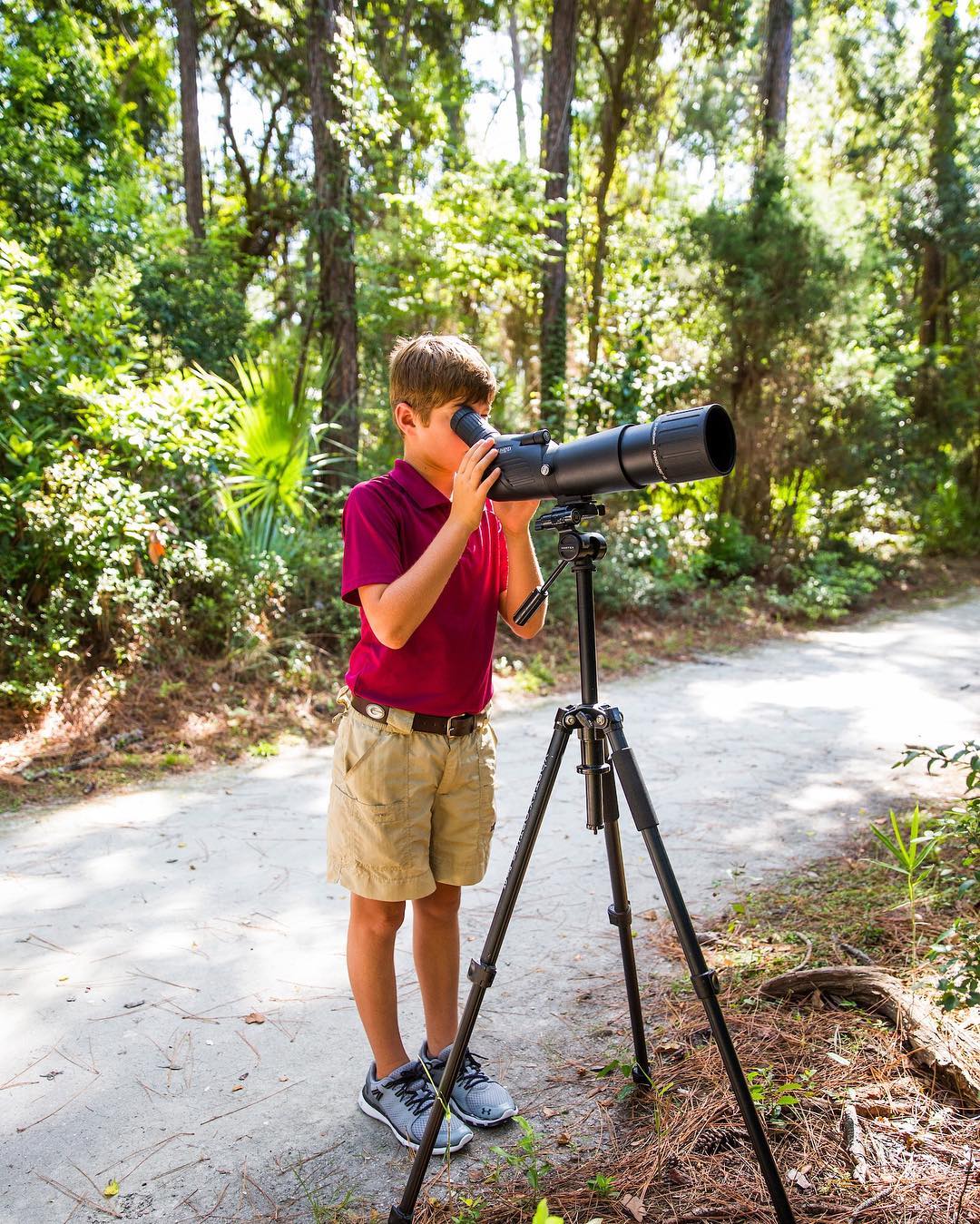
An important site along the Atlantic Migratory Flyway and a prominent highlight on the Colonial Coast Birding Trail, Jekyll Island is home to lush maritime forests, ten miles of unspoiled shoreline, and the famous marshes of Glynn County. Located just south of St. Simons, the island features multiple parks and picnic spots just perfect for a day of birdwatching, while the beaches offer great birding all year long.
While making the drive over to Jekyll Island, there are two different sites to stop along the Causeway for salt marsh bird watching and wildlife viewing. Keep your eyes peeled for waterfowl in the winter, nesting ospreys in the spring, and spoonbills in the summer. Shorebirds are best seen at low tide. Other frequent visitors include the bald eagle, clapper rail, northern harrier, black-necked stilt, white ibis, and wood stork.
Jekyll Island’s north end is home to Driftwood Beach, and a favorite spot for finding least terns, plovers, sanderlings, and painted bunting, as well as wading birds, ducks, and gulls. Thousands of scoters and scaup settle just offshore during the winter, while warblers fill the spring air with sweet songs. Meanwhile, on the island’s southern beaches, an array of shorebirds, wading birds, and waterfowl are easy to find – especially during the spring and summer at high tide. Watch for black skimmer, American oystercatcher, northern gannet, piping plover, and even rare gull species.
Join Jekyll Island Conservation staff on seasonal, scheduled Ranger Walks to learn more about the island’s natural resources and wildlife habitats!
Little Saint Simons Island
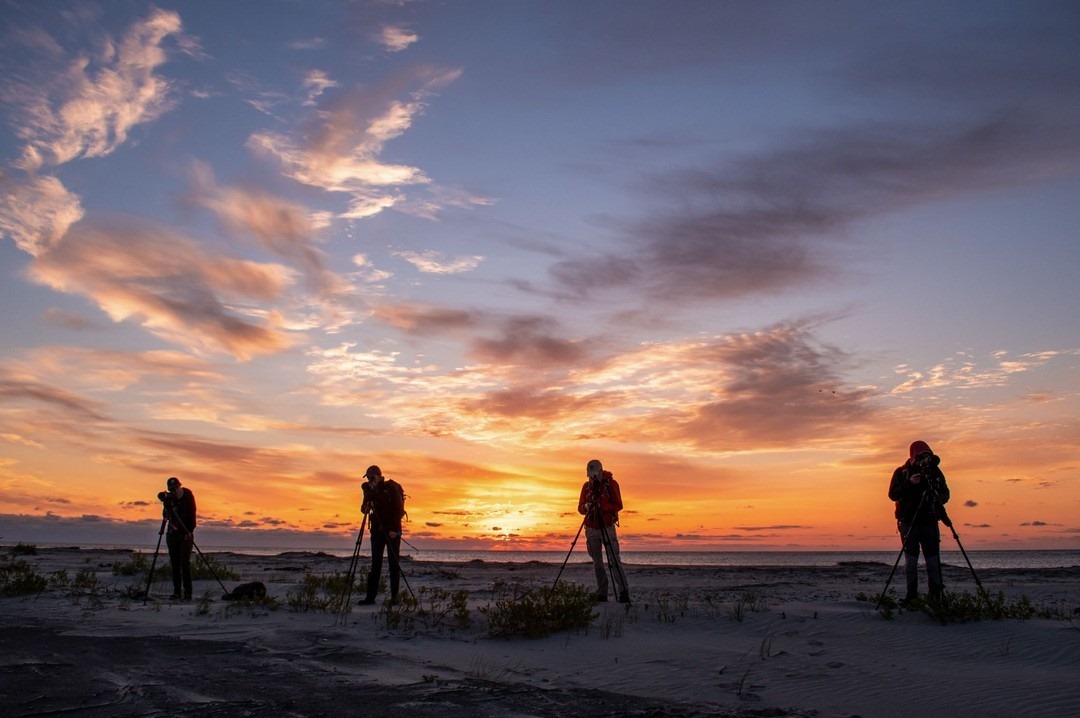
Though not officially recognized on the Colonial Coast Birding Trail, Little St. Simons Island is a birder’s paradise! The 11,000-acre island at the north end of St. Simons Island is almost entirely undeveloped wilderness, with numerous nature trails and seven miles of pristine beach to explore. Little St. Simons Island is part of the Altamaha River Delta Western Hemisphere Shorebird Reserve Network, designated by the National Audubon Society as an Important Bird Area as home to 280 different bird species.
Goose Pond is a fabulous sunrise locale where herons, great egrets, wood storks, black-necked stilts, woodpeckers, glossy ibises, and spoonbills can be found, but the rookery at Norm’s Pond is a significant natural highlight! From a two-story observation tower at the pond, guests can observe an array of species – from snowy egrets and anhingas to white ibises and black-crowned night herons nesting or engaging in courtship rituals, depending on the season.
As the location where the Altamaha River empties into the open ocean, Sancho Panza Beach draws an assortment of shorebirds, seabirds, and more, who gather on the sandbars just before and after high tide, including wood storks, pelicans, herons, egrets,bald eagles, terns, gulls, and the American oystercatcher.
Online Resources
Looking to connect with other birders or gain additional insight before your visit? Check out these great online resources:
- BirdCast – Real-time predictions of bird migrations since 2018! Discover when they migrate, where they migrate, and how far they will be flying. Created from a collaboration of many organizations and institutions, including the National Audubon Society, Cornell Lab of Ornithology, Clemson University Radar Ornithology Laboratory, the Academy of Natural Sciences in Philadelphia, and GeoMarine, Inc.
- eBird – A collaborative, community-driven tool developed by the Cornell Lab of Ornithology, allowing users to catalog bird sightings, and learn more about various species.

